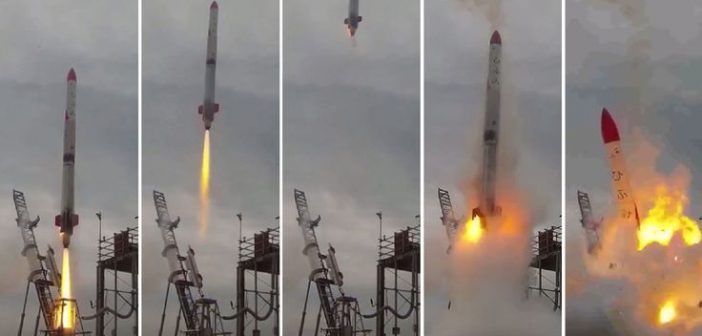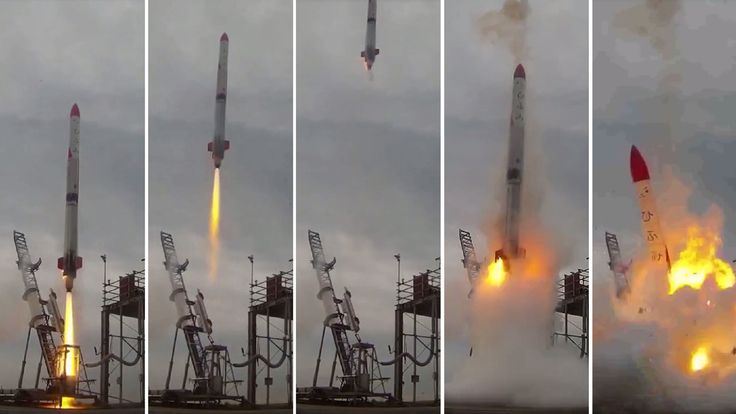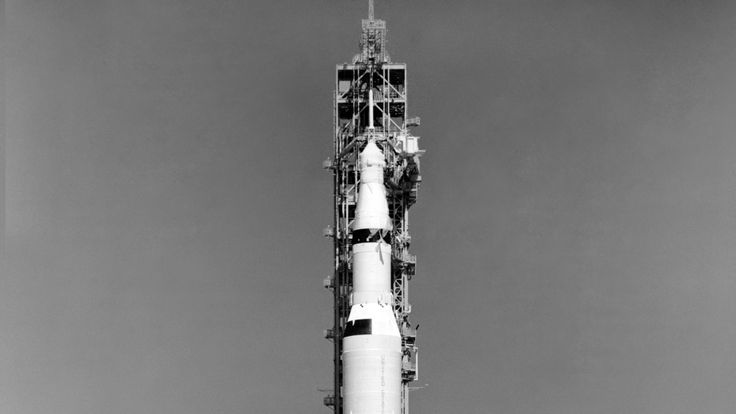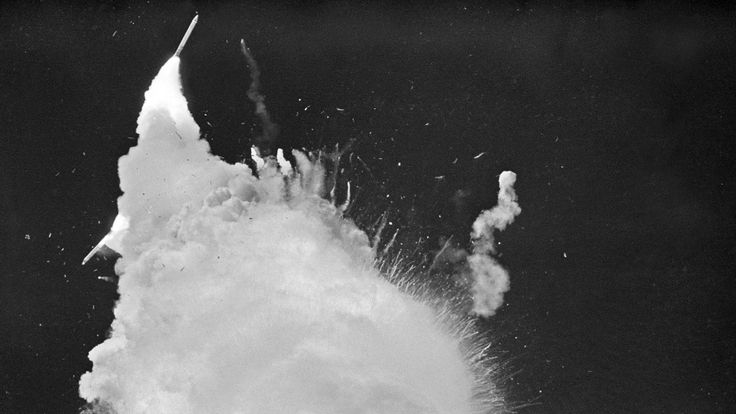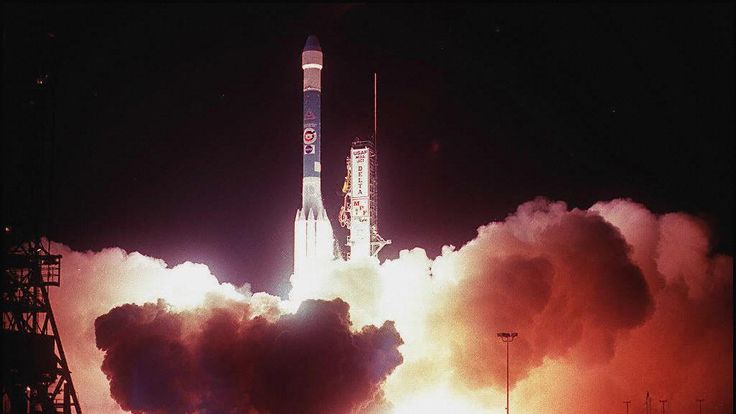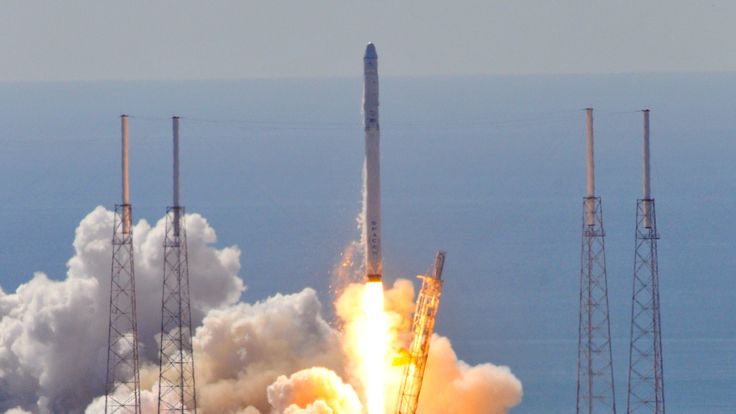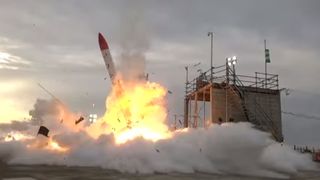Launching rockets into space can be a risky business, with fine lines between success and failure. When the latter does come to pass, the consequences can be catastrophic.
Fortunately, the latest instance of a space launch not going to plan did not end in tragedy, with a Soyuz rocket managing to land safely after a failure shortly after lift-off on a trip to the International Space Station.
But it still served as a worthwhile reminder of just how dangerous a career as an astronaut can be – as did these other incidents:
6 December 1957 Vanguard TV3
The Vanguard TV3 marked the first attempt by the US to launch a satellite into orbit – and it did not go to plan.
Just a few seconds after launch from Cape Canaveral, and at about four feet off the ground, the rocket plunged back down to the surface.
Quite incredibly, the satellite on-board managed to withstand the ordeal and is now on display at the Smithsonian.
4 April 1968 Apollo 6
In what was the final unmanned flight test before it would be deemed safe for a crew, Apollo 6 suffered from what are known as “pogo oscillations” and failed to complete its planned orbit of the Earth.
The oscillations are variations in the thrust of the spacecraft, caused by changing fuel rates, and it made for an unstable launch that may have contributed to the fact that two of its engines ended up shutting down.
So even though it did successfully make it into space, the issues showed it was still not suitable for astronauts.
28 January 1986 Challenger
All seven Americans on board died when the Challenger space shuttle disintegrated little more than a minute into its flight, making it tied with the 2003 Columbia disaster – which disintegrated upon re-entry – as the deadliest space voyage in history.
NASA investigated the tragedy and found that cold weather had caused an O-ring seal to fail, allowing hot gases from the shuttle rocket booster to effect the external propellant tank.
The result was that the Challenger was thrown sideways into a wind-stream equal to the speed of sound, causing most of the craft to disintegrate, and any survivors would have died when the cockpit hit the water back on Earth at about 200mph.
Those who died were Gregory Jarvis, Christa McAuliffe, Ronald McNair, Ellison Onizuka, Judith Resnik, Michael J Smith and Dick Scobee.
3 May 1986 GOES-G
Less than four months after the Challenger tragedy, the first NASA launch since then also ended in failure.
The plan was to send a weather satellite called GOES-G into space, but the rocket carrying it was hit by lightning shortly after launch and the resulting electrical failure sent it hurtling back from where it came.
NASA managed to destroy the rocket before it hit the surface.
17 January 1997 Delta II
Delta II is one of the most highly thought of rocket launch systems of all-time, and last month earned a streak of 100 successful missions in a row after the take-off of the ICESat-2 mission from California.
Its reputation makes one of its few misfires all the more memorable.
The US Air Force wanted to send a satellite dubbed GPS IIR-1 (not the catchiest of names) into orbit and Delta II was the system set to make it happen, but a rocket booster failed due to a hairline fracture in the casing.
Unspent liquid and solid fuel rained down from the craft as a result, destroying expensive equipment, buildings and cars parked below.
28 June 2015 Falcon 9
Elon Musk was able to boast when his company SpaceX successfully sent the most powerful rocket in the world into the stars earlier this year, but it has not been all smooth sailing for the South African.
In 2015, the firm aimed to blast a Falcon 9 rocket into space to provide supplies to the International Space Station, but it ended up exploding less than three minutes after take-off.
Engineers at the Kennedy Space Centre reviewed the failure and largely agreed with SpaceX that the rupture of the Falcon 9’s upper stage liquid oxygen tank was the cause, but their report also faulted SpaceX for the way the rocket had been built.
They said a a substandard steel component had been used to hold the helium reservoir inside the liquid oxygen tank, where propellant was chilled to about -184C (-300F).
30 June 2018 MOMO-2
There was a massive, fiery explosion as the bottom of the 10-metre rocket hit the ground following an engine failure just six seconds after taking off in Japan.
Dramatic TV footage showed the privately-funded MOMO-2 being launched into the air in Taiki, Hokkaido, before coming to an abrupt halt and crashing back down with a bump.
The rocket was developed by start-up firm Interstellar Technologies, which is aiming to provide affordable commercial space flights, and had reportedly been filled with ethanol and liquid oxygen.
It was its second attempted launch and it went even more poorly than its first, which reached about six miles into the sky before breaking apart in July last year.
From – SkyNews

